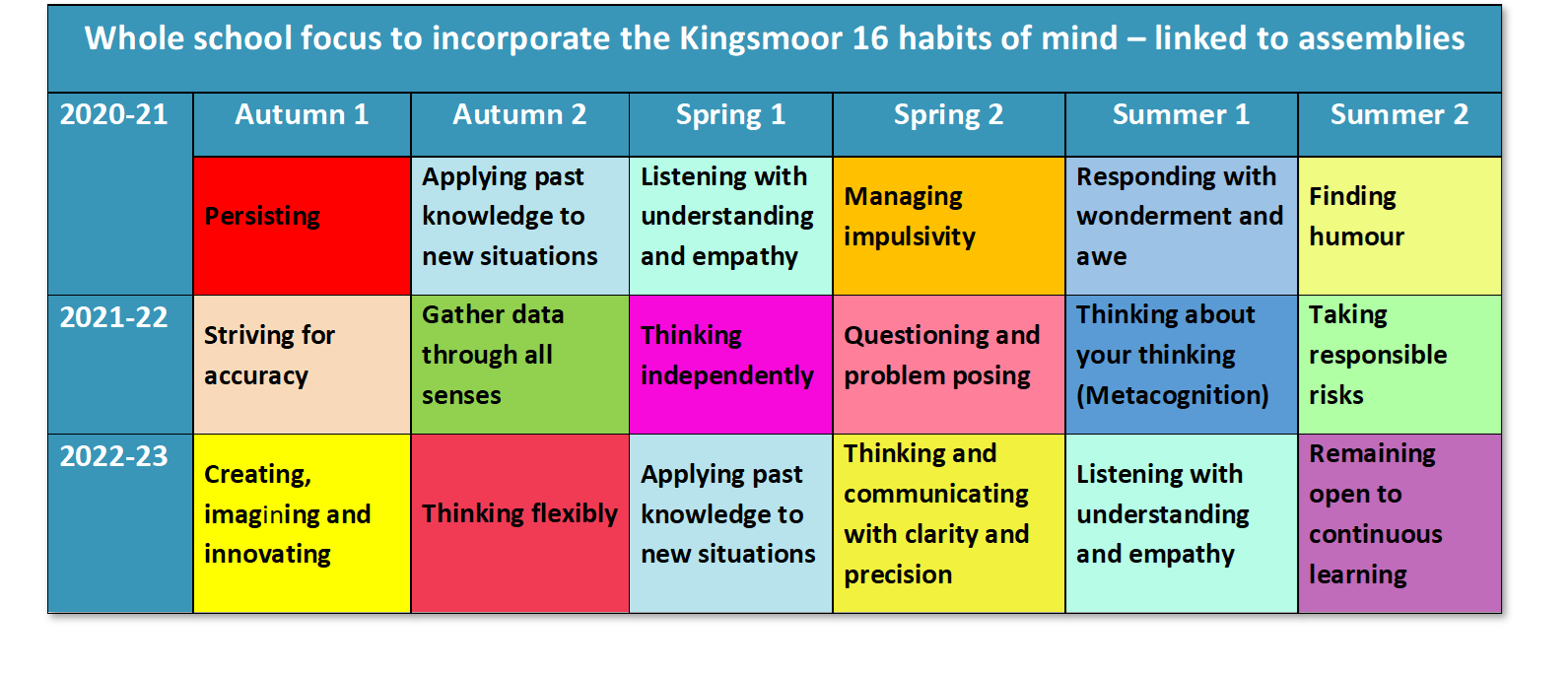
Though related to academic resilience, academic buoyancy is a distinctive concept in the literature. The Habits of Mind Institute uses the term “persisting” to describe this concept, which focuses on staying with one’s goals in the face of obstacles and challenges (Institute for Habits of Mind, n.d. Academic buoyancy is closely related to grit, or, more specifically, the consistency of effort that is used to define part of the idea of grit (Duckworth et al., 2007). These setbacks might include a challenging assignment, multiple due dates around the same time, a pending deadline, or receiving a poor score on an exam (Martin & Marsh, 2008). Academic buoyancy, a newer concept in the pedagogical literature, describes the likelihood a student will continue to persist despite normal, everyday setbacks. One of the goals of Connections is to model Habits of Mind of the successful student to normalize these habits for all our students.Ĭonnections is concerned with ensuring student success at USU. At Utah State University (USU), we believe programs that support academic success within the first year must encompass Habits of Mind, so much so that USU has instituted a first-year student program called Connections. It should come as no surprise, then, when many first-year students find themselves lagging and failing to persist with their academic studies. College students, including those who may not have experienced even minor academic failures to this point in their lives, are particularly impacted by this mentality. This can be an overwhelming perspective to have when starting a new chapter in life. They have been told that they need to go to college to get a good job that their professors do not care about how they do and that they are now on their own. Students often come to university with preconceived but in many cases inaccurate notions of what the university experience is like. Next week, a new educator will share experiences using the Question Formulation Technique.2 Preparing Students with Habits of Mind for the First Day of Class Read part 3 here where Jay discussed the importance of maintaining neutrality in the classroom. Read part 2 here where Jay discussed responses to students when they ask seemingly silly questions. Read part 1 here where Jay described a scaffolded approach that starts in kindergarten and extends to third grade and beyond.

Jay has shared how his school community has integrated the Question Formulation Technique into their classroom practice.
#Habits of mind institute series#
This blog is the final blog in a four part blog series from an educator in the field, Jay Corrigan. Using the Question Formulation Technique with primary students is a great way to instill that habit early on in a child’s academic career. I think that would be a pretty exciting place! However, to make questioning habitual, we have to start early. Imagine the classroom where everything for students is a potential QFocus. She would be in a meeting and the presenter would say something and questions would start to flow through her mind like water through a flooded creek bed. She would be driving down the road and see something and her mind would immediately begin to spin out questions. She explained that everything had become a QFocus. After giving her the address and phone number of the Right Question Institute so that she could direct her complaints up the chain of command, I asked her why. A conversation I had with a co-worker illustrates this beautifully!Ī colleague of mine told me after I introduced the Question Formulation Technique to her that I had ruined her life. However, using the Question Formulation Technique with young students is one way to build the habit of mind that Annie Fetter focuses on in her video so that asking questions (wondering) can become less of an event, and more of a habit of mind. It makes me think about the Question Formulation Technique and how with primary students, it is an event.

#Habits of mind institute how to#
Kids may not have developed this same habit of mind and may need support in learning how to think in this way. Most of us probably don’t have to remind ourselves that we need to notice things before we solve a problem.

As adults, we notice things and wonder about things in a way that is almost instinctual. Annie Fetter has a great video online where she talks about Noticing and Wondering.


 0 kommentar(er)
0 kommentar(er)
